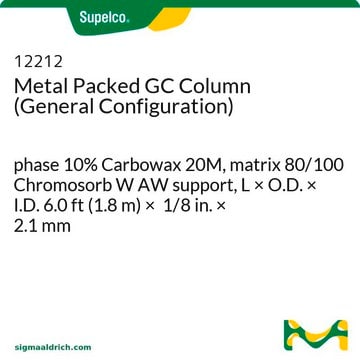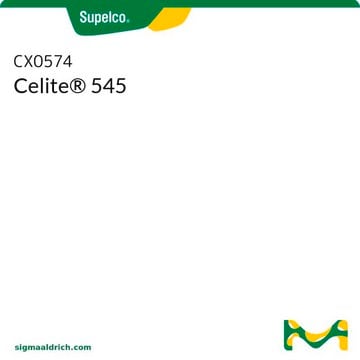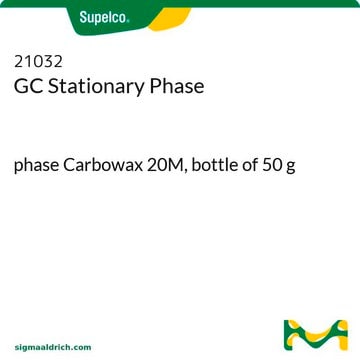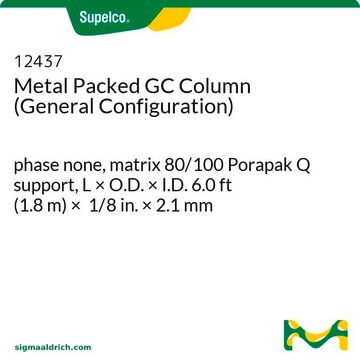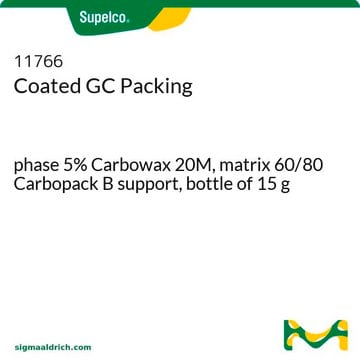20124
Chromosorb® W
AW, 80-100 mesh particle size, bottle of 100 g
About This Item
Produtos recomendados
forma
solid
embalagem
bottle of 100 g
técnica(s)
gas chromatography (GC): suitable
área da superfície
1.0-3.5 m2/g
tamanho de partícula
80-100 mesh
densidade
0.21-0.27 g/mL at 25 °C
0.18 g/cm3 (loose weight)(lit.)
cadeia de caracteres SMILES
O=[Si]=O
InChI
1S/O2Si/c1-3-2
chave InChI
VYPSYNLAJGMNEJ-UHFFFAOYSA-N
Procurando produtos similares? Visita Guia de comparação de produtos
Descrição geral
Informações legais
Palavra indicadora
Danger
Frases de perigo
Declarações de precaução
Classificações de perigo
STOT RE 1 Inhalation
Órgãos-alvo
Lungs
Código de classe de armazenamento
6.1D - Non-combustible acute toxic Cat.3 / toxic hazardous materials or hazardous materials causing chronic effects
Classe de risco de água (WGK)
WGK 1
Ponto de fulgor (°F)
Not applicable
Ponto de fulgor (°C)
Not applicable
Choose from one of the most recent versions:
Certificados de análise (COA)
Sorry, we don't have COAs for this product available online at this time.
If you need assistance, please contact Atendimento ao cliente
Já possui este produto?
Encontre a documentação dos produtos que você adquiriu recentemente na biblioteca de documentos.
Nossa equipe de cientistas tem experiência em todas as áreas de pesquisa, incluindo Life Sciences, ciência de materiais, síntese química, cromatografia, química analítica e muitas outras.
Entre em contato com a assistência técnica
